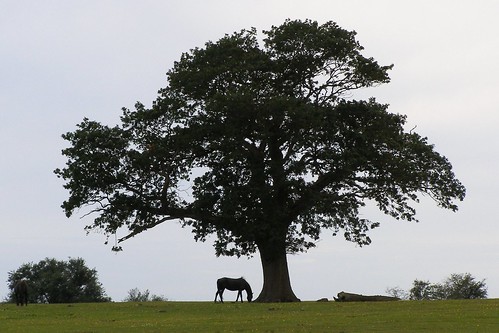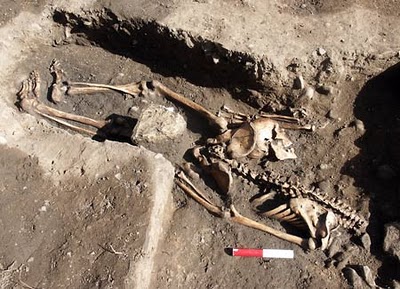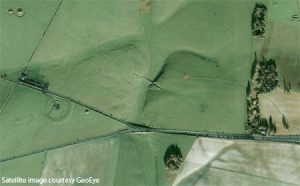 A Lidar (Light Detection and Ranging) pilot survey at the New Forest National Park has revealed previously unknown features to archaeologists. The data, from a a 34 square kilometres section of the New Forest between Burley and Godshill, has allowed researchers to identify a wide range of features, from Iron Age field systems and Bronze Age burial mounds (known as barrows) to anti-glider obstacles, a practice bombing range and a searchlight position from World War II.
A Lidar (Light Detection and Ranging) pilot survey at the New Forest National Park has revealed previously unknown features to archaeologists. The data, from a a 34 square kilometres section of the New Forest between Burley and Godshill, has allowed researchers to identify a wide range of features, from Iron Age field systems and Bronze Age burial mounds (known as barrows) to anti-glider obstacles, a practice bombing range and a searchlight position from World War II.
Normally archaeologists rely on lengthy and labour-intensive field surveys to uncover such features, but airborne Lidar helps speed up the process.
Tom Dommett, carrying out the historic landscape research for the National Park Authority says: One of Lidars greatest benefits in the Forest is its ability to penetrate all but the densest vegetation like conifer or holly. It reveals very subtle features which are difficult to see on the ground and are even more difficult to map accurately, particularly in woodland.
At the current rate of survey carried out in the National Park it would take roughly 200 years to obtain a full understanding of the archaeological resource, Dommett adds, but with Lidar we will hopefully be able to do it in 10 years.
Airborne Lidar is a ‘remote sensing technology’ that uses the time delay between transmission of a pulsed laser beam from a light aircraft and the detection of the reflected signal to measure up to 100,000 points per second, building a detailed model of the landscape and the features upon it.
But no technology is perfect. As Lidar is indiscriminate in what it shows, the date sometimes has to be backed up by a targeted field survey, known as ‘ground-truthing’.
This is where the involvement of the wider volunteering community has been really helpful and the New Forest History and Archaeology Group have already made an invaluable contribution, says Dommett.
Originally developed for submarine detection Lidar has only become popular with archaeologists in the last decade. Being a huge time-saver, it has become more and more common in ‘modern’ archaeology. It is mainly used to survey possible excavation sites (its ability to penetrate forest canopy reveals features that are invisible on satellite images) but also for mapping ancient structures themselves.
An example is recent research at the ancient Maya site of Caracol, where the laser survey covered a 200 square kilometre radius in four days and revealed several unknown terraces, hidden caves and roads. Archaeologists estimate it would have taken them 25 years of machete-wielding to gather the same data.
Closer to home, laser scans are being used to map Rome’s ancient catacombs and Scottish heritage sites such as the Antonine Wall, New Lanark, the Heart of Neolithic Orkney, the Old and New Towns of Edinburgh and the island of St Kilda.



